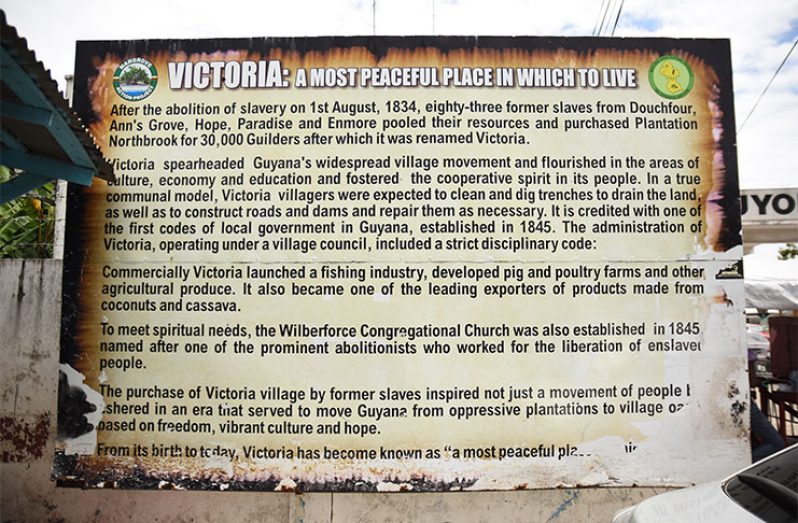THURSDAY, November 7, 1839, was indeed the dawn of a new day for Guyana’s manumitted slaves when a group of 63 of them, out of a determination to create for themselves and their heirs, a better life, took a bold new initiative. The move, radically pursued, was to purchase land being offered for sale from the estate of a Scottish owner who had earlier passed away.
It was the intention that they would use the land bought from the planters, as a springboard to create a better life and never again be subjected to the horrendous treatment they experienced while working with slave masters on the plantations.
Slavery was abolished in Guyana on August 1, 1834, and it was on November 7, 1839, that a group of 63 of the manumitted Africans, in good faith, came together and pooled monies they had earned while working on the estates under conditions of ‘blood, sweat and tears.’ They managed to come up with the purchase price of 30,000 guilders and zealously made the purchase.
The land being sold was Plantation Northbrook, which later came to be known as Victoria Village. It was owned by the late Scottish planter Baillie, who also owned Plantation Dochfour. As history has it, the money was all in coins and was so heavy, it had to be fetched in a wheelbarrow to be handed over by the sellers. That move is recorded as the first major breakthrough accomplished by the purchase, and to date, it is with a sense of pride that the Village of Victoria is alluded to.
Victoria was said to have spearheaded British Guiana’s widespread Village Movement and flourished in the areas of culture, economy and education and fostered the cooperative spirit in its people.
“In a communal model,” the modus operandi displayed on a village meeting place outlined, “Victoria villagers were expected to clean and dig trenches to drain the land, as well as to construct roads and dams and repair them as necessary. It is credited with the first codes of local government in Guyana established in 1845.”
The administration of Victoria, operating under a village council, included a strict disciplinary code:
• Commercially, Victoria launched a fishing industry, and developed pig and poultry farms and agricultural produce
• It also became one of the leading exporters of products made from coconuts and cassava
To meet spiritual needs, the Wilberforce Congregational Church was also established and was named after one of the prominent abolitionists who worked for the liberation of the people.
It continued, “ The purchase of Victoria Village by former slaves inspired not just a movement of people, but ushered in an era that served to move Guyana forward, based on freedom, vibrant culture and hope.” It concluded: “From its birth to today, Victoria has become known as a most peaceful place.”
Meanwhile, historian Joseph Barlow Jnr., a Victorian who has written extensively on the history of the village, and who has spent the last 20 years in his homestead after being domiciled in North America, is not satisfied that the freed slaves’ vision for the people of Victoria has been evolving in the manner anticipated, given the potentials of the people.
Barlow, after painstakingly reflecting on the work, dreams and aspirations of British Guiana’s first freed slaves, is assiduously working to resist the lure of the people being sucked into conditions of the past. “I feel that with the changing of time, different people come and those people have different visions. My vision, even though I might have been at the forefront of the struggles, may not necessarily be the vision when I am in the saddle. This being so, what I would say, is that the Village Movement has died an unnatural death, having made an assessment of things since my return to this country 20 years ago and living in Victoria continuously for that period,” he stated.
In relation to the structure of the Village Movement, things changed radically in the 70s Barlow said, adding, “…and I do not think we have recovered from there. As I recall, up until the 70s, your trenches were cleaned, you could stand up on the bridges and see fish down inside the trench. There was no garbage around the place and now things are different. In those days the burial ground was cleaned and all this was achieved by persons who did not necessarily have the highest of education … certainly not secondary, much less tertiary,” he reasoned.
He is firmly of the view that there should be more representatives from respective villages on the councils. He also said that a closer examination of the 1980 Constitution, Chapter 2, deals with the local authorities and that would solve the problem. “My submission is that if you are accustomed to seeing something work and suddenly it is no longer working, then go back and re-examine what was working,” Barlow said.




.png)









